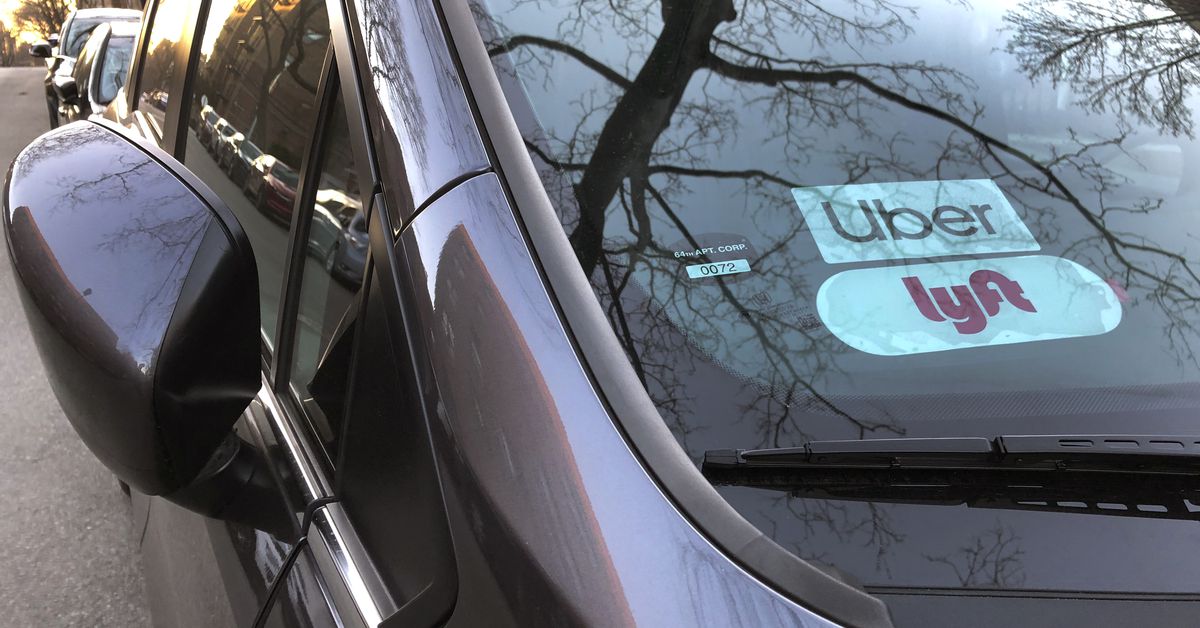Uber and Lyft are finally starting to look like different companies
Uber and Lyft have been operating on parallel tracks for a long time. Drivers moonlight for both services, customers toggle between the two apps, and despite Lyft’s efforts to position itself as a “woke” alternative to Uber, the two companies essentially operate identical ride-sharing services in the US.
Of course, there’s a lot to differentiate the two from one another. Uber is global, while Lyft only operates in North America. Uber dominates ride-sharing, taking in roughly 70 percent of US riders spending and leaving Lyft with the rest. But this week’s earnings reports revealed a much sharper divergence between the two companies than we’ve seen in the past, namely around side hustles.
Uber’s main side hustle is delivery. Food and other delivery bookings in the fourth quarter grew 33 percent year over year. The company’s CEO, Dara Khosrowshahi, told investors that Uber’s delivery business reported its first quarterly profit, including delivery in the US, and that “Uber Eats became the fastest-growing delivery player in America.”
Lyft, meanwhile, has a small business-to-business delivery operation but has no plans on trying to tackle the much bigger and riskier world of consumer delivery. “As we’ve said for many years, we’re a transportation-focused company,” Lyft president John Zimmer said in his company’s earnings call. “We want to have one main consumer that we’re building for. And again, we will not build a consumer-facing marketplace for groceries or food.”
What Lyft has that Uber doesn’t, though, is a thriving micromobility business. Lyft claims to be the largest electric bike operator in North America thanks to its bike-share business, including the extremely popular Citi Bike in New York City. How popular are we talking? According to Zimmer, Citi Bike was the “25th most-ridden transit network in the United States.”
“To put this in context, last year, more people took rides on Citi Bikes than on BART, the Bay Area’s regional transit system,” he added.
In fact, bike-share is a faster-growing business for Lyft than ride-share. “Consider that in each quarter of 2021, the number of riders using our bikes and scooters in addition to ride-share consistently grew faster than ride-share-only riders,” said Zimmer.
Uber has largely abandoned its two-wheeled operations, selling its Jump bikes to Lime and ditching its electric scooter business as well. Uber remains an investor in Lime, and customers can rent Lime’s e-bikes and mopeds through Uber’s app. But for all intents and purposes, Uber is out of the micromobility game.
Another key difference between the companies is their approach to autonomous vehicles. Uber and Lyft were both initially bullish about AVs, acquiring startups, hiring thousands of engineers, and making big promises about robotaxis on their platforms. But as costs ballooned and timelines stretched, both companies eventually decided to cut their losses. Uber sold its AV business to Aurora in 2020, while Lyft divested its self-driving unit to Woven Planet, a subsidiary of Toyota, last year.
But Lyft still sees an opportunity in remaining in close proximity to the AV world. The company made a deal with Ford-backed Argo.ai to put hundreds of the company’s autonomous vehicles on its platform. Zimmer said he expects the partnership to scale to 1,000 vehicles across multiple markets by 2026.
“The Lyft network is a continuously improving product, stemming from a decade of engineering investments in billions of real-world rides,” he added. “As a result, AV providers are increasingly working with us to help advance and commercialize their technology.”
There were zero mentions of AVs in Uber’s earnings call — which shouldn’t come as a total shock. One of the company’s self-driving test vehicles struck and killed a pedestrian in Tempe, Arizona, back in 2017 in what many call the first AV fatality. Federal investigators said safety lapses at Uber were partially to blame for the death. The company stuck with its AV project for several years after the incident before eventually deciding to divest itself entirely.
It’s not wrong to see Uber and Lyft as two sides of the same coin. Both companies still derive most of their revenue from car trips. Both are highly invested in subscription services as a way to build loyalty among customers and prevent app-switching. And both are still embroiled in tense debates over gig work and driver classification.
But this most recent quarter revealed that the future of both companies may actually be more different than originally expected.
For all the latest Technology News Click Here

